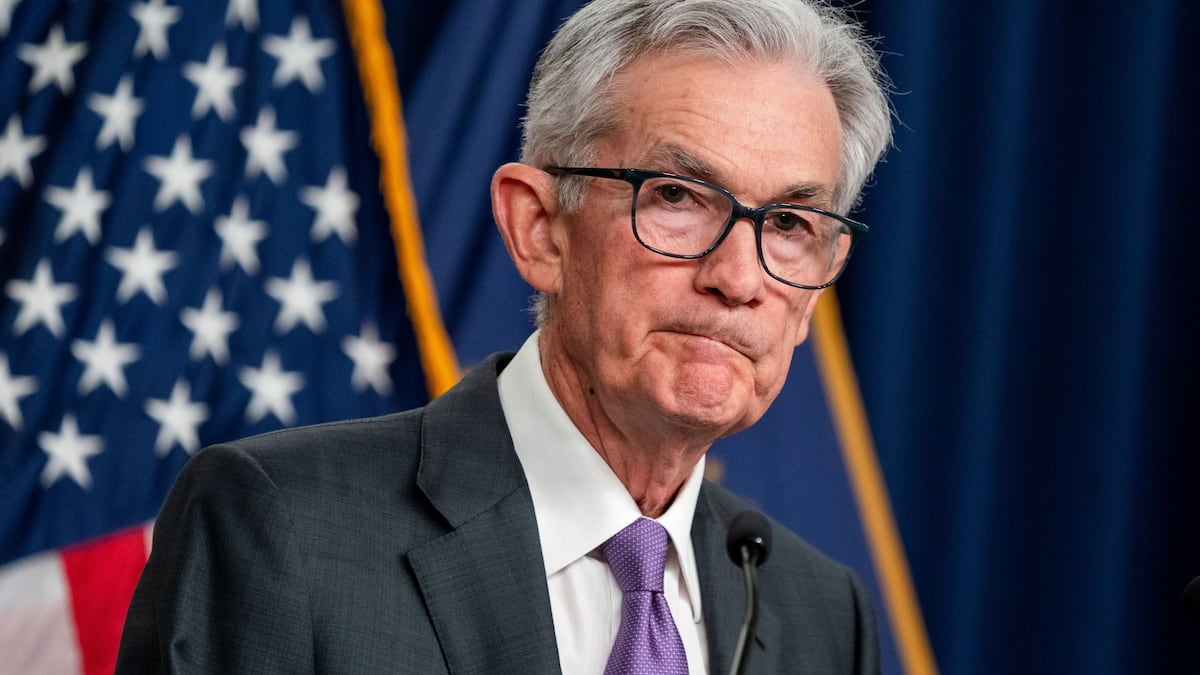- More investors are expecting that the Federal Reserve won’t cut rates in May.
- The longer interest rates stay high, the more likely it is for another liquidity crisis to occur, says crypto hedge fund Lekker Capital.
- Bitcoin traders should play “defensive” until the uncertainty clears up.
Bitcoin plunged 7% on Tuesday in the span of a few hours, before bouncing back to $66,300.
However, Bitcoin traders should brace for more market “hiccups” over the next two months, Quinn Thompson, founder of crypto hedge fund Lekker Capital, told DL News.
All eyes on the Fed
Tuesday’s drop was likely triggered by investors’ shifting expectations about the Federal Reserve’s monetary policy, Thompson said.
The Fed is likely to cut rates this year, but not at the next meeting, scheduled for April 30 and May 1, Federal Reserve Bank of Cleveland President Loretta Mester said on Tuesday.
Upcoming inflation data will need to bolster the case for a loosening of monetary policy, she said, adding that that might not be clear until June.
Inflation figures released on Friday also helped dampen expectations that the central bank will begin cutting federal funding rates at the next meeting.
That’s bad news for crypto and other risk assets.
The market is “in a place to be a little more defensive,” Thompson said. “If we get a liquidity crisis, interest rates start spiking, and the government doesn’t step in, then it’s a little precarious.”
In other words, the Fed needs to choose between lowering rates — thus stoking inflation — and keeping them high, and blunting economic growth.
Thompson pointed out that markets had experienced three liquidity crises since the Fed began raising rates in March 2022.
In September 2022, then-UK Chancellor of the Exchequer Kwasi Kwarteng presented a tax-cutting mini-budget that ended up rattling international financial markets.
Investors were then reluctant to foot the bill of the government’s planned £70 billion in debt sales, sending gilts to their worst day since the ‘90s.
Days later, the Bank of England stepped in to buy UK government bonds.
Six months later, Silicon Valley Bank and other regional US banks failed, which kicked off an international crisis.
This time it was the US Treasury that intervened to stop the contagion.
The US bond market has also experienced a period of steep sell-offs, with key yields reaching levels unseen since the 2008 financial crisis — signalling a lack of demand for US debt.
Some of the tools the Fed used to manage the previous crises and buffer liquidity — like the bank term funding programme and reverse repo programme — are winding down.
Thompson asked: What will the government do if another crisis arises?
“No one wants to cause a big market issue, liquidity crunch, or recession.”
There is optimism.
“Policymakers could use that cover of declining markets — or declining liquidity — to step in, which could ultimately propel risk assets higher this year,” he said.
And Bitcoin is expected to benefit from a few tailwinds in April, such as the upcoming halving event and Wall Street’s growing crypto adoption.
Crypto market movers
- After falling to $65,000, Bitcoin has recovered to about $66,000
- Ethereum rose 1% to about $3,313
What we’re reading
- How Binance’s dispute with Nigeria spiralled into a crisis of arrests and criminal charges — DL News.
- U.S. Government Moves $2 Billion In Silk Road Bitcoin — Milk Road.
- Who Is Buying Into Spot Bitcoin ETFs? We’ll Soon Start to Get an Idea — Unchained.
- Coinbase Warns Of Hidden Risks To Ethereum Network Stability — Milk Road.
- Meet five offbeat startups in a16z crypto’s spring accelerator programme — DL News.
Tom Carreras is a markets correspondent at DL News. Got a tip? Reach out at tcarreras@dlnews.com






